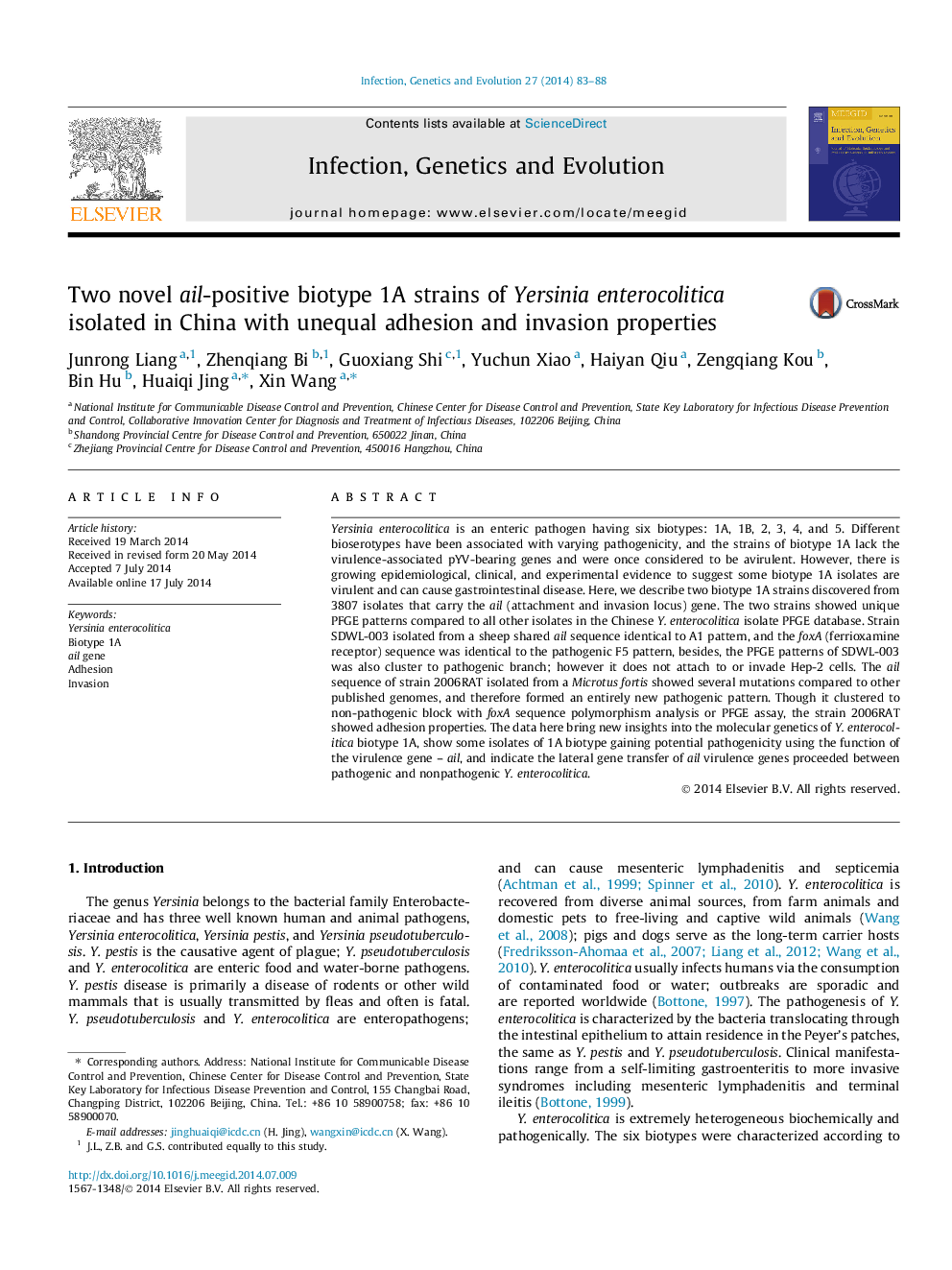| Article ID | Journal | Published Year | Pages | File Type |
|---|---|---|---|---|
| 5909742 | Infection, Genetics and Evolution | 2014 | 6 Pages |
Abstract
Yersinia enterocolitica is an enteric pathogen having six biotypes: 1A, 1B, 2, 3, 4, and 5. Different bioserotypes have been associated with varying pathogenicity, and the strains of biotype 1A lack the virulence-associated pYV-bearing genes and were once considered to be avirulent. However, there is growing epidemiological, clinical, and experimental evidence to suggest some biotype 1A isolates are virulent and can cause gastrointestinal disease. Here, we describe two biotype 1A strains discovered from 3807 isolates that carry the ail (attachment and invasion locus) gene. The two strains showed unique PFGE patterns compared to all other isolates in the Chinese Y. enterocolitica isolate PFGE database. Strain SDWL-003 isolated from a sheep shared ail sequence identical to A1 pattern, and the foxA (ferrioxamine receptor) sequence was identical to the pathogenic F5 pattern, besides, the PFGE patterns of SDWL-003 was also cluster to pathogenic branch; however it does not attach to or invade Hep-2 cells. The ail sequence of strain 2006RAT isolated from a Microtus fortis showed several mutations compared to other published genomes, and therefore formed an entirely new pathogenic pattern. Though it clustered to non-pathogenic block with foxA sequence polymorphism analysis or PFGE assay, the strain 2006RAT showed adhesion properties. The data here bring new insights into the molecular genetics of Y. enterocolitica biotype 1A, show some isolates of 1A biotype gaining potential pathogenicity using the function of the virulence gene - ail, and indicate the lateral gene transfer of ail virulence genes proceeded between pathogenic and nonpathogenic Y. enterocolitica.
Related Topics
Life Sciences
Agricultural and Biological Sciences
Ecology, Evolution, Behavior and Systematics
Authors
Junrong Liang, Zhenqiang Bi, Guoxiang Shi, Yuchun Xiao, Haiyan Qiu, Zengqiang Kou, Bin Hu, Huaiqi Jing, Xin Wang,
